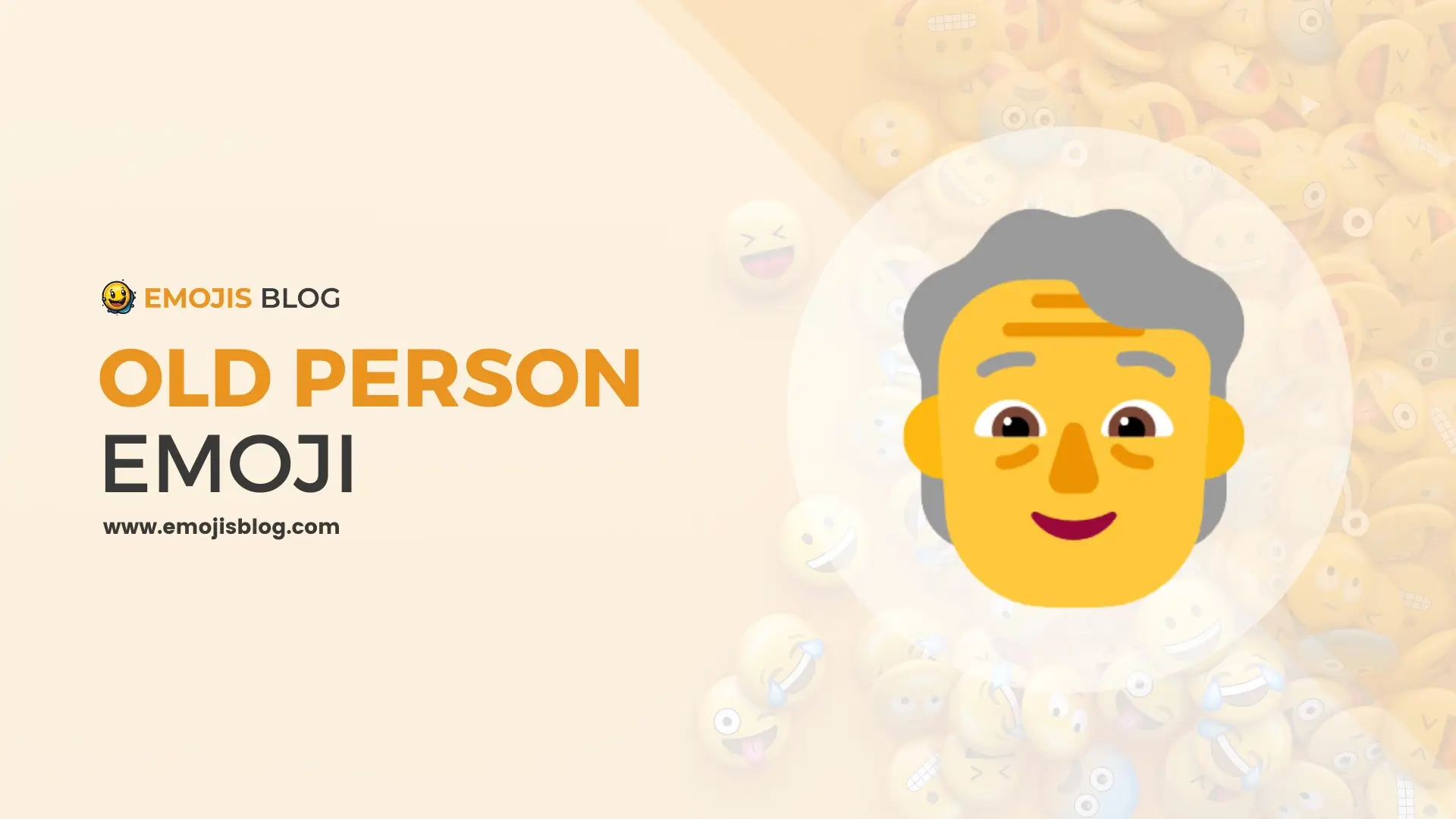What Does The Old Person Emoji Mean 🧓
🧓
The Meanings Of Old Person Emoji 🧓
The old person emoji 🧓 is a digital icon representing an elderly individual in a gender-neutral manner, characterized by features like white hair and wrinkles, to symbolize age. Introduced as part of Unicode 10.0 in 2017, it serves a variety of purposes, from denoting wisdom and experience associated with age to humorously expressing feelings of being out-of-touch or physically aging. This emoji encapsulates societal respect for the elderly and acknowledges the diversity of human life stages in digital communication, reflecting a broader trend towards inclusivity and representation in the emoji lexicon.
Technical Information
| Emoji | 🧓 |
|---|---|
| Name | Old Person |
| Unicode Version | 5.0 (2017) |
| Unicode Character | U+1F9D3 |
| Code Point | 129459 |
| Category | Smileys & People |
| Subcategory | Person: Older |
| Keywords | face, elder, old, person |
| Shortcode | None |
| Emoji Version | Emoji 5.0 |
| Emojipedia Link | 🧓 |
Understanding the Old Person Emoji 🧓
The old person emoji 🧓 represents more than just a digital icon; it’s a symbol used across various digital platforms to depict an elderly individual, gender-neutral, characterized by the representation of age through common visual cues such as wrinkles and white hair. This emoji serves a multitude of purposes, from representing aging or wisdom to simply indicating someone’s grandparent. Below, we delve into the significance, usage, and cultural implications of the old person emoji.
The Design and Evolution of the Old Person Emoji
Originally introduced as part of Unicode 10.0 in 2017, the old person emoji 🧓 filled a significant gap in the emoji lexicon by providing a gender-neutral option to represent the elderly. Prior versions included gender-specific options, but the introduction of a neutral emoji marked a step towards inclusivity and diversity in digital communication. The design typically features a front-facing head with white hair, visible wrinkles, and sometimes glasses, embodying the universal characteristics associated with aging.
Usage and Context
The old person emoji 🧓 is versatile in its usage. Here are a few contexts in which it might be used:
- Age Representation: To indicate age, whether discussing topics related to aging, senior citizen benefits, or simply mentioning someone’s grandparent.
- Wisdom and Experience: Often used to denote wisdom or experience that comes with age, in contexts discussing advice or historical knowledge.
- Humor and Self-deprecation: Younger individuals might use it humorously to suggest they’re feeling old, especially in contexts relating to trends or technology that they find perplexing.
- Cultural and Social Discussions: In discussions about aging societies, retirement, and the dignity of elderly individuals, this emoji can serve as a shorthand representation.
Cultural Implications and Variability
The interpretation of the old person emoji 🧓 can vary significantly across cultures. In societies where age is highly respected, the emoji can carry positive connotations of wisdom, respect, and societal contribution. Conversely, in contexts where youth is particularly valorized, it might be used in more humorous or self-deprecating ways.
Furthermore, the emoji’s appearance can vary across platforms, with each tech company designing its version within the Unicode Consortium’s guidelines. This variability means that the emoji can appear slightly differently on Apple devices compared to Android or Windows devices, reflecting the diverse interpretations and representations of aging.
Inclusivity and the Future of Digital Communication
The inclusion of the old person emoji 🧓 in the Unicode Standard highlights the ongoing efforts to make digital communication more inclusive and representative of diverse human experiences. As emojis continue to evolve, they become more nuanced and varied, offering users a broad palette for expressing emotions, experiences, and identities.
The future might bring even more diversity in emoji representations, including more variations of the old person emoji to represent different ethnicities, hairstyles, and cultural symbols associated with aging. This evolution will reflect the growing understanding that digital platforms and communication methods must celebrate and respect all aspects of human diversity.
Conclusion
The old person emoji 🧓 represents a significant stride towards inclusivity and diversity in the emoji world. It encapsulates the complexity of aging, wisdom, and the elderly’s role in society, all within a simple digital glyph. As digital communication continues to evolve, the symbols we use to convey our messages will undoubtedly grow richer and more reflective of the world’s diverse experiences.

